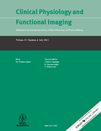Changes in lung function of HIV-infected patients: a 4·5-year follow-up study
Summary
Objective
To investigate the development of lung function in HIV-infected patients.
Methods
In a prospective cohort study, 88 HIV-infected patients had a lung function test performed and 63 patients (72%) had their LFT repeated with a median follow-up period of 4·4 years. Forty-eight per cent were smokers, and at the re-examination, 97% were on combination antiretroviral therapy.
Results
Carbon monoxide diffusion capacity was reduced and decreased over time in both smokers and non-smokers. Alveolar volume decreased and forced vital capacity increased similarly in both smokers and non-smokers. No changes were observed in forced expiratory volume or peak flow, but smokers had reduced values compared with those of the non-smokers at both examinations. FEV1/FVC was reduced especially in smokers and declined in both smokers and non-smokers.
Conclusions
Carbon monoxide diffusion capacity is reduced in HIV-infected patients and seems to decline over time. Additionally, signs of obstructive lung disease are present in HIV-infected patients and seem to increase over time, although only modestly.




